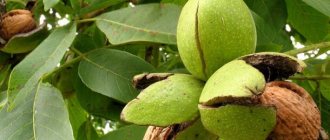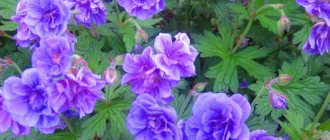This tree, blooming with unrealistically luxurious large flowers, will become a masterpiece of any garden and a source of pride for flower lovers, with its enchanting aroma of vanilla with a hint of lemon, which will not leave anyone indifferent.
If you have not seen this miracle, urgently take a look at the photo of magnolia flowers. And don’t think that this beauty is very picky, not at all, you just need to treat her correctly in matters of growing and caring for her.
The magnolia flower is incredibly beautiful; it is not for nothing that this tree is considered a symbol of inviolable purity in the Republic of China, but also quite respected in our country. There is hardly a person who can contemplate such splendor with indifference.
But the value is not only in her blooming appearance. Did you know that leaves, fruits, flowers and tree bark contain essential oils that are valued as antiseptics for hypertension and rheumatic diseases?
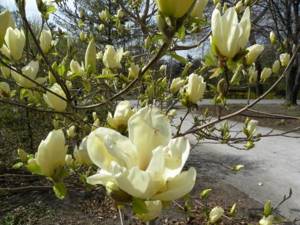
The name Magnolia comes from the surname of the famous scientist P. Magnol. Currently there are more than 70 varieties. Mature trees have the shape of a pyramid or sphere, reaching a height of up to 20 m, but on average about 5-8 m.

What colors will decorate your tree depends on the variety you choose. Only it is possible to grow only a small fraction of the 120 varieties, due to our cold climate.

Proper planting and care of magnolia
To begin with, we select magnolia seedlings with a closed root system. Then we will decide on the location of the future splendor, taking into account the following nuances:
- does not tolerate wind and drafts;
- It categorically does not accept soil saturated with lime, because the roots may die. To dilute such soil, mix acidic peat into it to lower the pH;
- It develops slowly on moisture-saturated soils and sand.

The ideal location would be a sunny corner, or in hot regions a shady one with light soils.

Autumn is the best time to plant magnolia. When seedlings take a break and slow down their growth. This usually happens in October, before frost hits and the heat has already subsided.
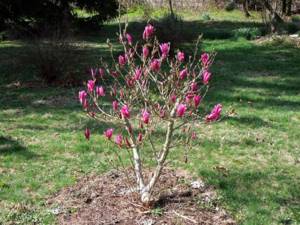
There is no consensus on planting in the spring. Some professionals say that April is a great time for planting. Others are confident that repeated frosts can destroy seedlings or significantly harm them.

Decide for yourself which side you will take. But, probably, it’s not worth the risk, because autumn seedlings take root 100%.
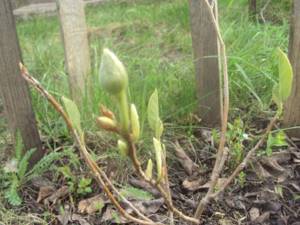
Next is the next stage. Preparing the hole for planting: its dimensions should be 3 times the volume of the roots.
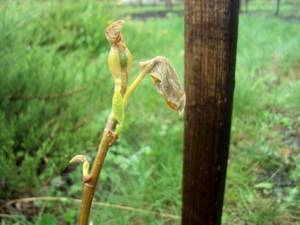
Magnolia in landscape design
Magnolias are very effective in solitary plantings in windward areas of the garden. This could be a lawn in a recreation area, or a nook at the transition to the border of an orchard. But since magnolias bloom very early, when nature has not yet thrown off the shackles of winter sleep, only the owners usually have time to enjoy their blooms - it is not yet the season for guest gatherings.
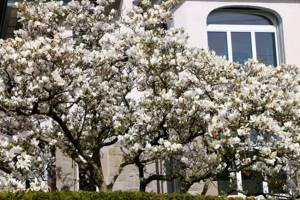
Magnolias are good in mixed plantings, where the plants are provided with the same environmental conditions - humidity, fertility, light. Since some species grow well in partial shade, their neighbors may be hostas, ferns, astilbes and some creeping conifers. The most beautiful ornamental shrub for a garden where the soil does not dry out.
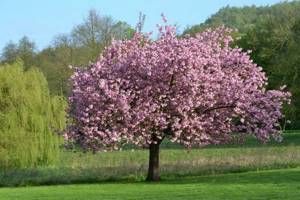
Adult magnolias do not require care and can easily withstand the winter frosts of the Almaty region. Choose a southern exposure for them, cover them for the first two years, and provide the magnolias with regular watering, then you will always admire the most beautiful blooms in the spring. Oh, yes - don’t rush to buy the first blooming magnolia you come across - there is a wide selection on sale now, study the market longer and more carefully: perhaps by autumn the prices for seedlings will drop significantly. We hope you enjoy magnolia in your garden; planting and caring for it in the open ground is within the capabilities of any gardener.
Care
In this matter, magnolia is not whimsical; it is enough to follow the following recommendations:
- Monitor the soil moisture. Don't let it dry out. Mulch the surface of the soil - this will retain moisture and insulate the roots in winter.
- in winter, provide shelter in the form of a burlap wrap (just be careful not to break the branches!)
- Trim frozen branches, as well as damaged ones, and treat the cuts with garden varnish.
- Do not fertilize for the first couple of years, and then do it regularly from early spring until autumn. But don't overdo it, everything is good in moderation.
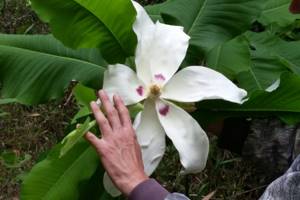
How to grow magnolia on your own plot
Russian breeders have accumulated vast experience in growing magnolias and have developed recommendations. Planting and maintenance conditions are simple:
- Carbonate soils without lime.
- Regular abundant watering with warm water.
- A bright, wind-protected landing site.
The best landing time is late September/early October.
- A hole with a drainage layer at the bottom is prepared for the seedling. As drainage, you can use crushed brick in half with sand and expanded clay. The diameter and depth of the hole must be at least 2 times the volume of the root system.
- After planting, the tree trunk space should be slightly compacted and moistened. As water is absorbed, experts advise covering the soil with a layer of peat. Adding mulch from the bark of coniferous trees will provide additional protection to the young shoot.
- You can only feed a three-year-old magnolia. In addition to special industrial mixtures, homemade formulations are used. A time-tested recipe gives good results:
- Water – 15 l,
Ammonium nitrate – 20 g,
- Urea – 15 g,
- Manure – 1-1.5 kg.
- After the tree has flowered, it is recommended to prune dry branches. Be sure to cover the cut with garden varnish.
Mix the mixture thoroughly and leave for a day. Watering is carried out on moist soil no more than once a month at the rate of 50-60 liters per seedling.
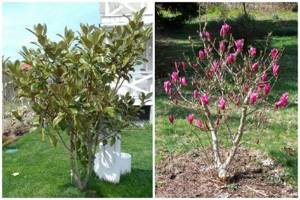
Malicious factors
Among the harmful ones are rodents and moles. Some gnaw the root system, others dig them up. Lubricate the damaged areas with a 1% foundation solution.

Spider mites are dangerous in hot, dry weather. It absorbs the juice of the leaves, causing them to die completely.

Beneficial features
The main thing you need to know is that the tree is poisonous . You can't stay near him for too long, it can cause headaches.
However, this feature does not at all mean that it is not worth growing. It contains a lot of useful components that can be used for medicinal purposes:
- By making a tincture of magnolia flowers and consuming it, you can lower your blood pressure.
- Even old asthma can be cured by gargling with a decoction of brewed flowers.
- This is an excellent plant, a decoction of which can cure caries and other dental diseases.
The tree has long been famous for its healing qualities . All parts of the plant contain useful components; many medicinal preparations are created from magnolia.
The magnolia tree has a truly unique beauty; its blossoms can bewitch. However, monitoring this process will require a lot of effort to do everything possible to create favorable conditions. Magnolia should be planted in the fall; it will have time to develop the territory. This will facilitate the establishment of the seedling, which means the first step towards obtaining a beautiful and luxurious tree.




